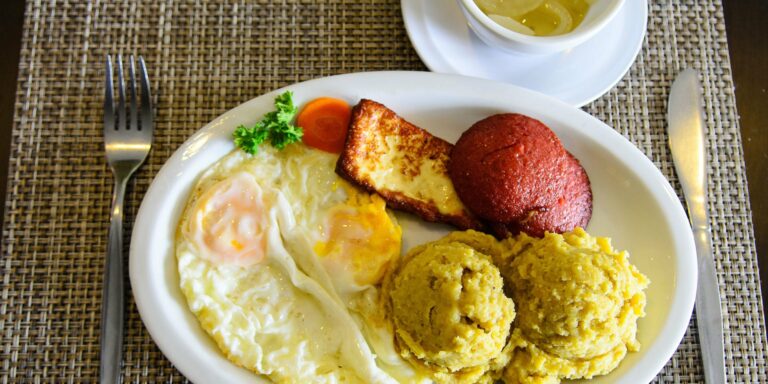Introduction: What is Dominican Republic Cuisine?
Dominican Republic cuisine is a blend of various cultural influences, including Spanish, African, and indigenous Taino. With its tropical climate and fertile soil, the Dominican Republic boasts an abundance of fresh fruits, vegetables, and seafood, making its cuisine a colorful and flavorful experience. The food is often accompanied by traditional music and dance, creating an exciting atmosphere that celebrates the country’s vibrant culture.
The Influence of Indigenous and African Cultures
Before the arrival of the Spanish, the Taino people inhabited the Dominican Republic. Their influence on the country’s cuisine can be seen in dishes like mofongo, a mashed plantain dish filled with meat or seafood. African slaves were brought to the island in the 16th century, and their traditions have also shaped Dominican cooking. For example, sancocho, a hearty stew made with various meats and vegetables, has roots in West African cuisine.
Staple Foods: Rice, Plantains, and Beans
Rice, plantains, and beans are the foundation of many Dominican dishes. Arroz con habichuelas, a dish of rice and beans, is a staple at every table and often served alongside meat or fish. Plantains are used in many ways, including being boiled and mashed in mofongo, sliced and fried as tostones, or sweetened and fried as plátanos maduros. Beans are also a common ingredient in soups, stews, and salads, with red kidney beans being the most popular variety.
Meat Dishes: Pollo Guisado, Chicharrón de Cerdo, and More
Dominican cuisine features a variety of meat dishes, including pollo guisado (braised chicken), chicharrón de cerdo (fried pork belly), and carne guisada (stewed beef). These dishes are traditionally served with rice and beans, and often accompanied by avocado and salad.
Seafood Delicacies: Locally Caught Fish, Crab, and Lobster
With its location in the Caribbean Sea, the Dominican Republic is known for its fresh seafood. Locally caught fish such as red snapper and sea bass are popular, as well as crab and lobster. These delicacies are often seasoned with a blend of spices and served with rice and salad.
Street Food: Empanadas, Arepas, and Chimichurri
Dominican street food is a delicious and affordable way to experience the country’s cuisine. Empanadas, pastries filled with meat or cheese, are a popular choice. Arepas, corn cakes stuffed with meat or cheese, are also a tasty option. Chimichurri, a sandwich made with beef, cabbage, and tomatoes, is a favorite among locals.
Sweets and Desserts: Dulce de Leche, Flan, and Tres Leches Cake
Dulce de leche, a sweetened condensed milk caramel, is a popular ingredient used in many Dominican desserts. Flan, a creamy custard, and tres leches cake, a sponge cake soaked in three types of milk, are also common sweet treats. Other desserts include arroz con leche, a rice pudding, and bizcocho, a sponge cake.
Popular Drinks: Rum, Morir Soñando, and Mamajuana
Rum is the national drink of the Dominican Republic, with Brugal and Barceló being the most popular brands. Morir soñando, a refreshing drink made with orange juice and milk, is a favorite among locals. Mamajuana, a mixture of rum, red wine, and herbs, is a traditional drink with alleged medicinal properties. Other popular non-alcoholic beverages include batida, a fruit smoothie, and jugo de chinola, a passion fruit juice.

